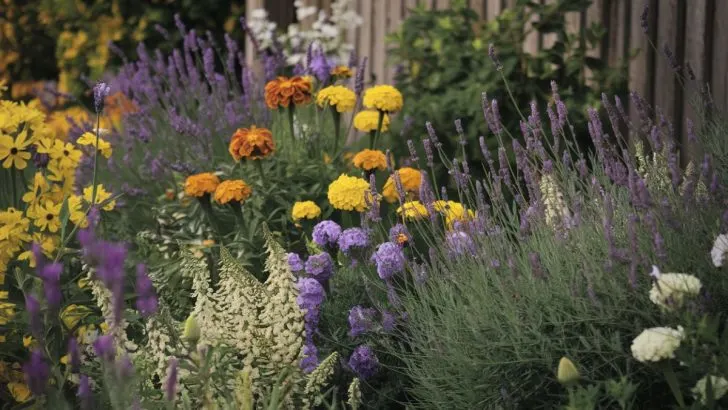Lavender is not just any ordinary plant; it’s a vibrant, aromatic staple that brings life and color to any garden. Just picture those stretches of purple blooms swaying gently in the breeze. But there’s more to lavender than its gorgeous looks and heavenly scent.
It’s a beacon for pollinators, drawing bees and butterflies with its rich nectar. What if you could enhance this haven by adding a few other pollinator-friendly florals into the mix?
This article covers five flowers that complement lavender both aesthetically and practically, making your garden not just a visual delight, but a buzzing hotspot of biodiversity.
Supporting pollinators is more crucial now than ever, as they play an essential role in the production of about one-third of the foods and beverages we consume. By cultivating a thoughtful selection of plants, you can create a sustainable environment that helps these critical creatures thrive.
Besides, who wouldn’t want to see flowers teeming with life? Let’s explore some stunning floral companions that pair perfectly with lavender.
1. Echinacea (Coneflower)
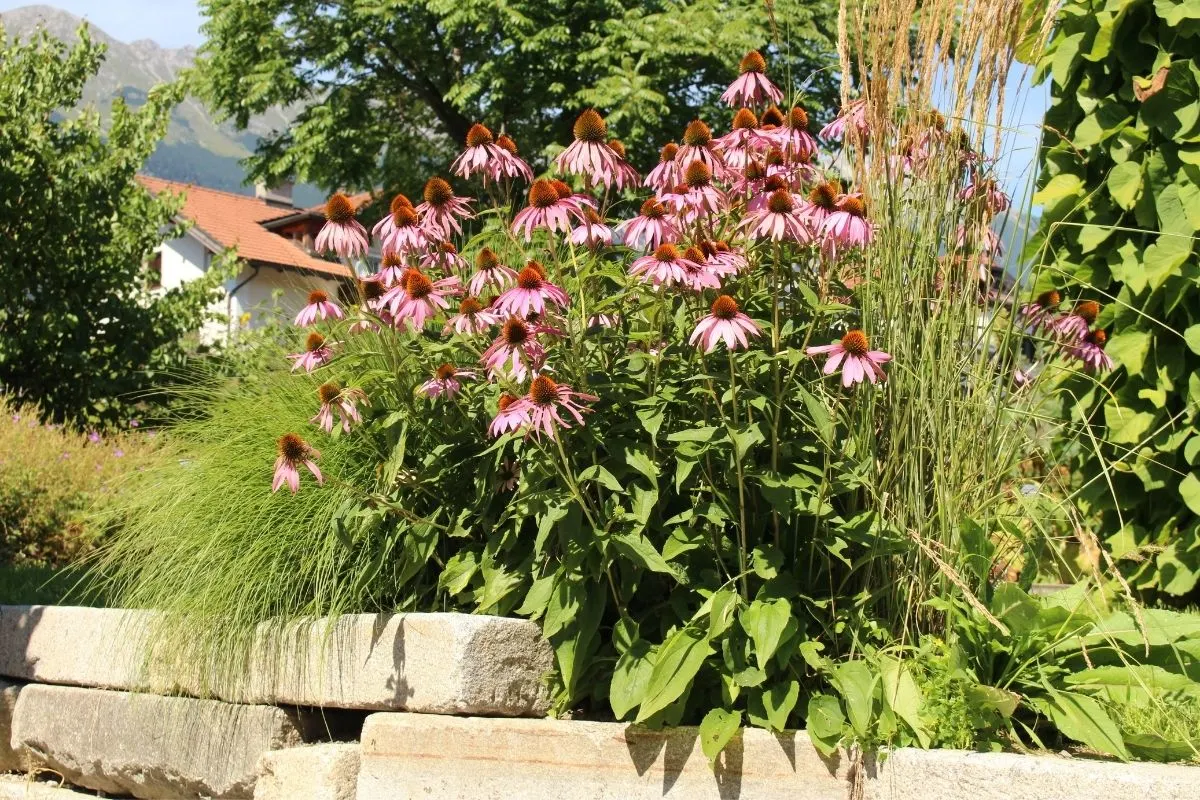
Echinacea, commonly known as coneflower, is a tough perennial with a striking appearance. Its bold, daisy-like flowers come in shades of pink, purple, and white, offering a beautiful contrast to the deep hues of lavender. Coneflowers bloom from midsummer through fall, ensuring that your garden remains vibrant even as lavender begins to fade.
These flowers are not only eye-catching but also a favorite among bees and butterflies. Their long bloom season means they provide a continuous food source for pollinators. Plus, coneflowers are resilient and low-maintenance, making them an ideal choice for both novice and seasoned gardeners alike.
When planted alongside lavender, they create a dynamic, pollinator-friendly environment that’s as practical as it is pretty.
2. Salvia (Sage)
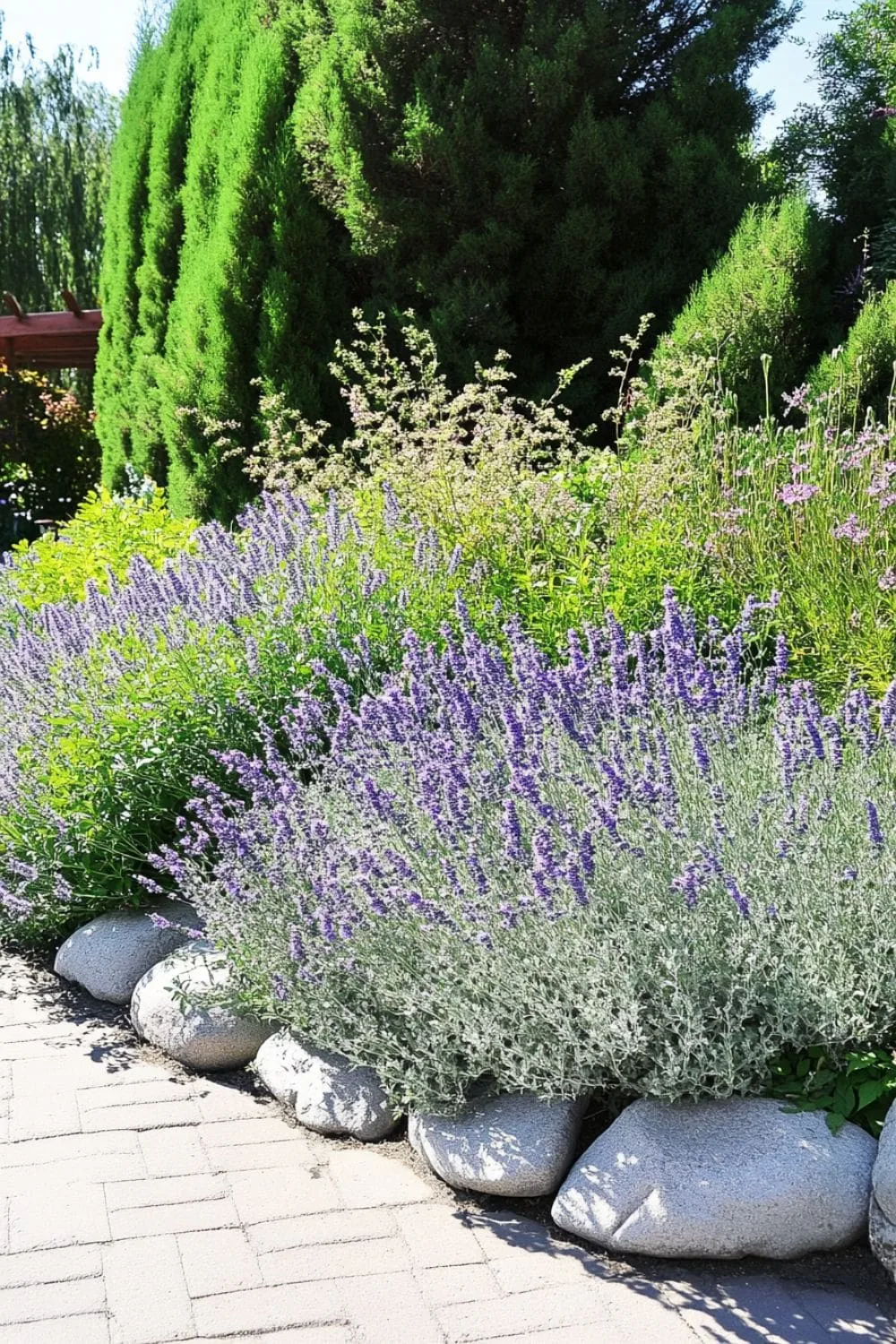
Salvia is another excellent companion for lavender, offering both visual and ecological benefits. Like lavender, salvia has a robust fragrance and is beloved by pollinators, including hummingbirds. The spikes of purple, pink, or blue salvia flowers add both height and texture to your garden.
Being drought-resistant, salvia makes a perfect match for lavender, which thrives in well-drained soil. Planting these two together can create a stunning sea of purple that not only beautifies your garden but also maximizes its appeal to bees and butterflies.
With minimal watering needs, this duo is a smart choice for environmentally conscious gardeners looking to conserve water.
3. Coreopsis

Brighten up your garden with coreopsis. Known for its sunny, yellow blooms, coreopsis adds a splash of color that perfectly complements lavender’s cooler tones.
These flowers are easy to care for and are incredibly drought-tolerant, making them a practical addition to any garden.
Coreopsis is adored by a variety of pollinators, including butterflies and bees. Their ability to thrive in poor soil conditions is another bonus, as they require little upkeep once established.
This resilience and beauty make coreopsis a fantastic choice to pair with lavender, enhancing both the vibrancy and ecological value of your garden.
4. Sedum
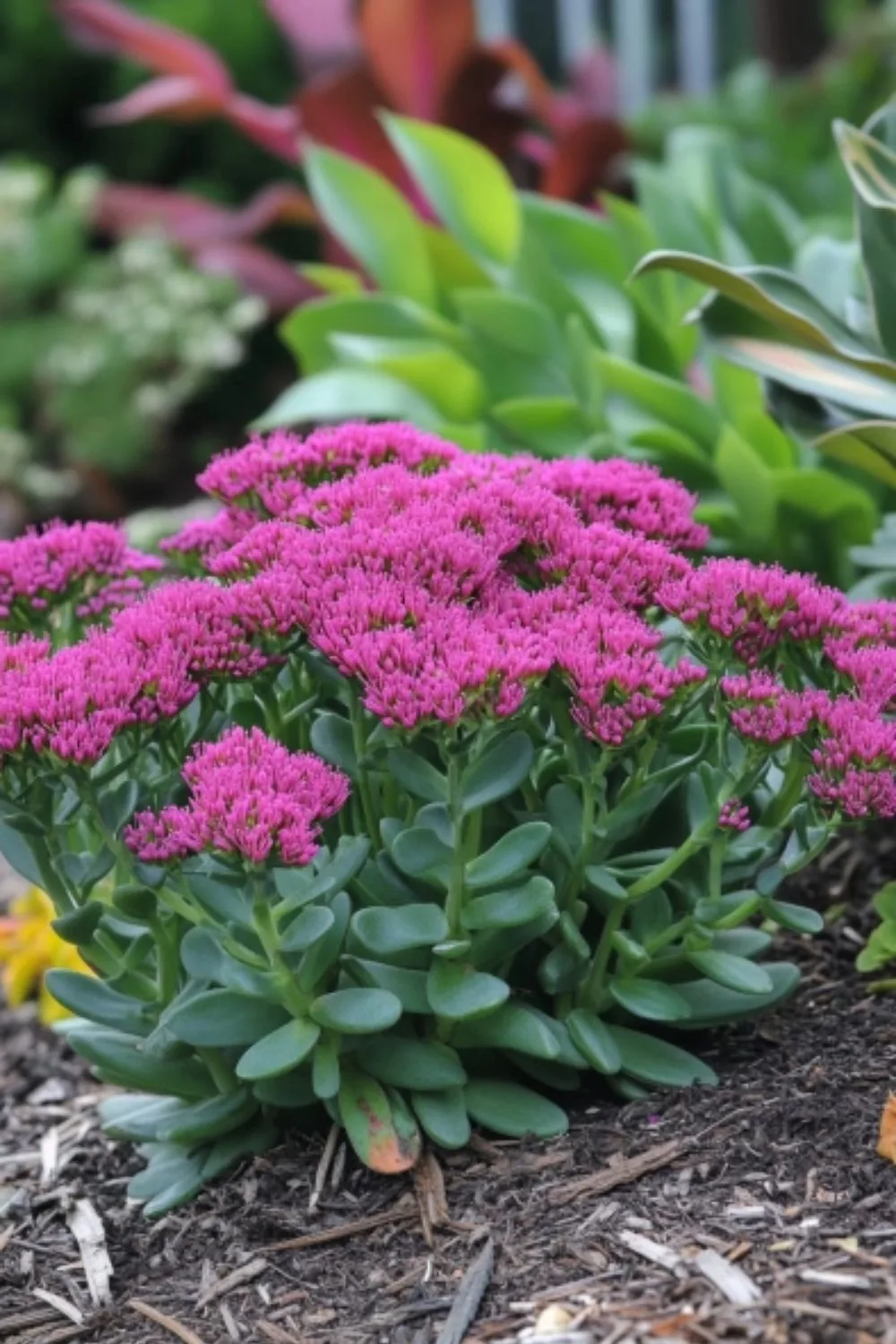
Sedum, or stonecrop, is a succulent that provides a unique texture to garden beds. With its fleshy leaves and clusters of star-shaped flowers, sedum complements lavender both visually and functionally. It thrives in similar conditions, loves the sun, and has minimal water requirements.
These late-blooming flowers are perfect for extending your garden’s feeding period for pollinators. As summer transitions to fall, sedum becomes a vital source of nectar, ensuring that bees and butterflies have resources even as other plants wind down. Its adaptability and late bloom make sedum a valuable addition to any lavender-centric garden.
5. Black-Eyed Susan
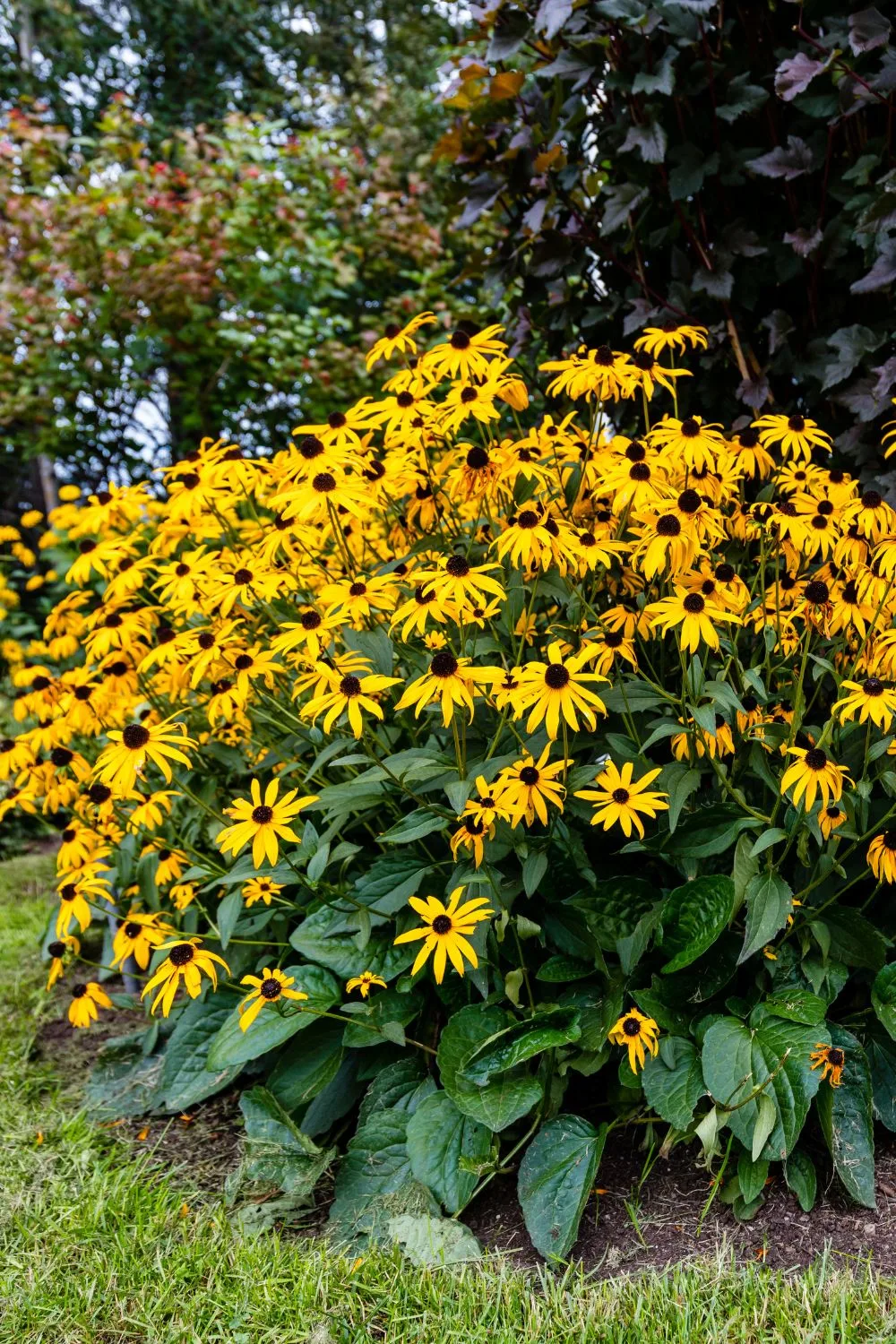
Last, but certainly not least, is the charming Black-Eyed Susan. With its golden petals and dark centers, this flower creates a stunning contrast with lavender.
Black-Eyed Susans are robust perennials that bloom into fall, much like coneflowers, offering an extended period of beauty and pollinator support.
Their daisy-like appearance attracts a variety of pollinators, including bees and butterflies, and they are known for their resilience and minimal maintenance needs.
When planted with lavender, Black-Eyed Susans add both color and ecological diversity to your garden space.
Enhancing your garden with these pollinator-friendly companions to lavender not only boosts its beauty but also supports the ecosystem.
By inviting more pollinators into your garden, you’re contributing to the sustainability of these essential species.
Consider planting these combinations and watch as your garden transforms into a buzzing paradise.

